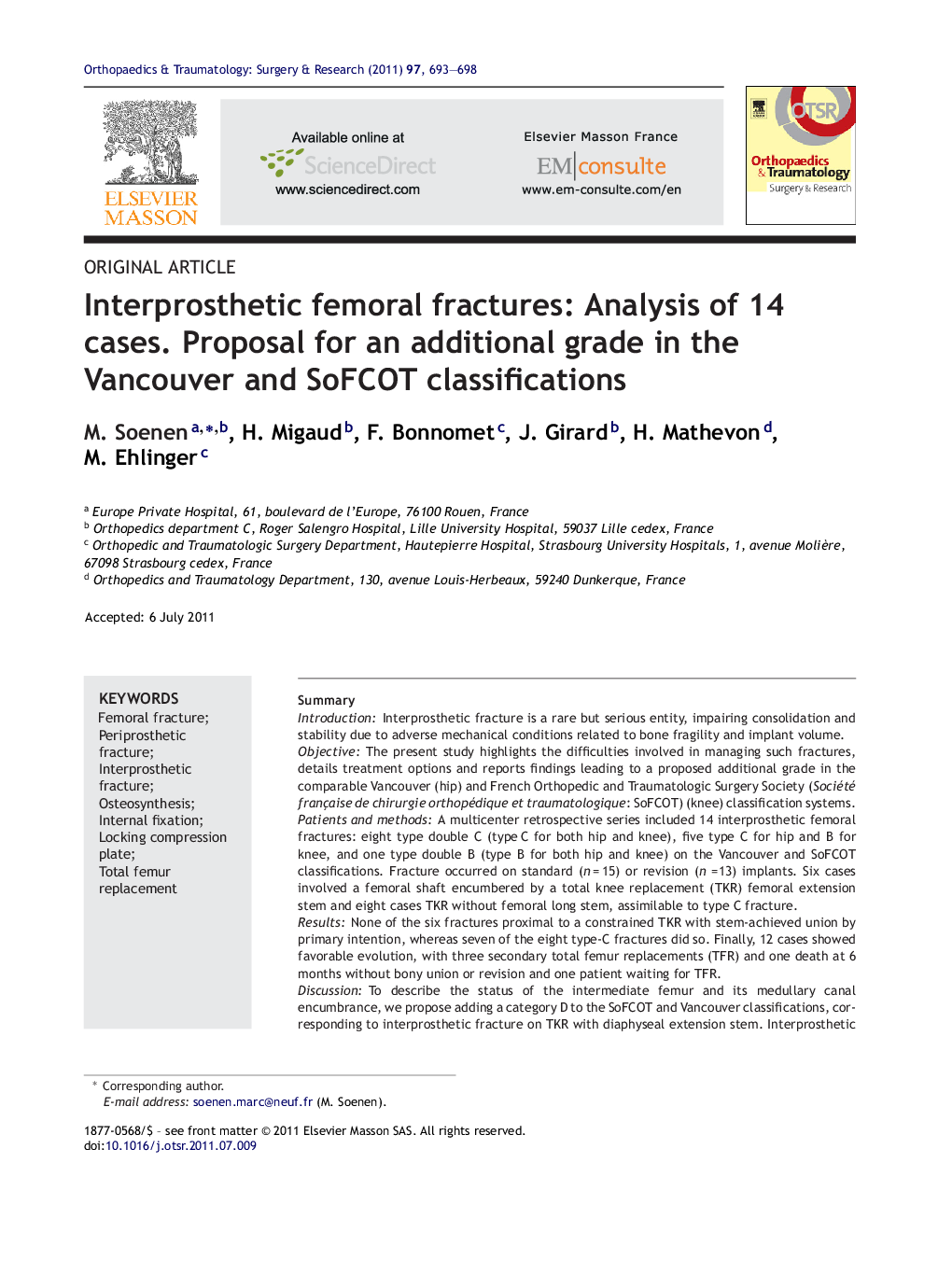| کد مقاله | کد نشریه | سال انتشار | مقاله انگلیسی | نسخه تمام متن |
|---|---|---|---|---|
| 4082004 | 1267619 | 2011 | 6 صفحه PDF | دانلود رایگان |

SummaryIntroductionInterprosthetic fracture is a rare but serious entity, impairing consolidation and stability due to adverse mechanical conditions related to bone fragility and implant volume.ObjectiveThe present study highlights the difficulties involved in managing such fractures, details treatment options and reports findings leading to a proposed additional grade in the comparable Vancouver (hip) and French Orthopedic and Traumatologic Surgery Society (Société française de chirurgie orthopédique et traumatologique: SoFCOT) (knee) classification systems.Patients and methodsA multicenter retrospective series included 14 interprosthetic femoral fractures: eight type double C (type C for both hip and knee), five type C for hip and B for knee, and one type double B (type B for both hip and knee) on the Vancouver and SoFCOT classifications. Fracture occurred on standard (n = 15) or revision (n =13) implants. Six cases involved a femoral shaft encumbered by a total knee replacement (TKR) femoral extension stem and eight cases TKR without femoral long stem, assimilable to type C fracture.ResultsNone of the six fractures proximal to a constrained TKR with stem-achieved union by primary intention, whereas seven of the eight type-C fractures did so. Finally, 12 cases showed favorable evolution, with three secondary total femur replacements (TFR) and one death at 6 months without bony union or revision and one patient waiting for TFR.DiscussionTo describe the status of the intermediate femur and its medullary canal encumbrance, we propose adding a category D to the SoFCOT and Vancouver classifications, corresponding to interprosthetic fracture on TKR with diaphyseal extension stem. Interprosthetic fracture internal fixation should begin with long devices bridging the two prostheses. When the implant is loose, it may be replaced; in case of diaphyseal extension, however, the residual femur between the two extensions should be protected against peak stress by a plate extending upward and downward. In case of limited bone stock, due to osteolysis or initial femoral medullary canal compromise, especially if one or both implants are loose, TFR may be indicated as consolidation, is jeopardized by the uncertain mechanical situation.Level of evidenceLevel IV, retrospective study.
Journal: Orthopaedics & Traumatology: Surgery & Research - Volume 97, Issue 7, November 2011, Pages 693–698